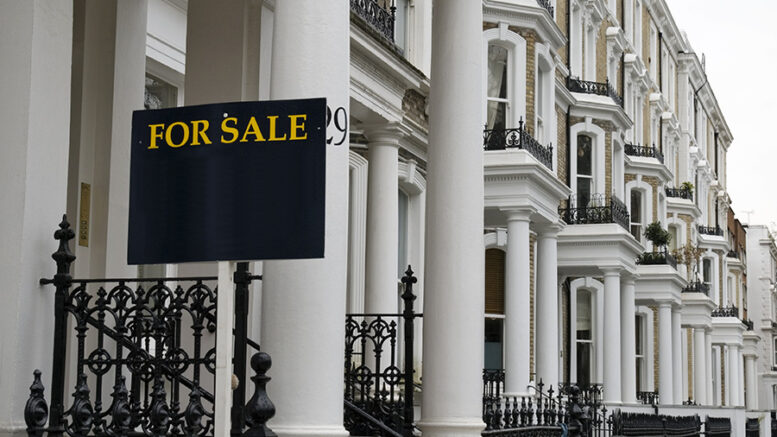Prime London’s luxury housing market saw a sharp fall in listings over the summer, as sellers of £2 million-plus homes pulled back ahead of the Autumn Budget. According to Jefferies London, high-end listings fell by 4.3% in the third quarter of 2025, leaving just 35% of all London homes on the market priced above £2m.
The data - based on Rightmove listings up to 23 September - paints a picture of uncertainty at the top end of the market. While activity remains steady in ultra-prime pockets such as Mayfair and Regent’s Park, many sellers in traditional hotspots like Notting Hill and Knightsbridge have stepped back, wary of softening demand and shifting tax expectations.
Prime London property market adjusts before the Autumn Budget
Jefferies’ founder, Damien, said that the quarterly dip in listings reflected both renewed buyer appetite and ongoing seller caution.
“The quarterly decline in prime London listings reflects a combination of factors. The market has been slightly more active in recent months, which has absorbed a portion of stock. But many sellers remain hesitant to list, unconvinced they’ll achieve the prices they want while conditions remain subdued.”
That caution is palpable in Notting Hill, where listings of £2m-plus homes dropped by 15.4% between Q2 and Q3 - the sharpest fall recorded. Other major declines were seen in Maida Vale (-10.7%), Holland Park (-10.4%), Knightsbridge (-9.4%), and St John’s Wood (-6.3%).
For landlords and investors, this tightening supply suggests a potential rebound in values once clarity emerges from the Autumn Budget, particularly if higher-end stock remains constrained.
Pockets of resilience in Mayfair and Regent’s Park
Despite the broader slowdown, several districts are bucking the downward trend. Mayfair saw a 17.8% increase in £2m-plus listings over the quarter, while Regent’s Park posted an 8.6% rise. Modest gains were also recorded in Pimlico (+4%) and Fitzrovia (+0.9%), hinting at renewed interest in tightly held central zones where ultra-prime demand remains global.
Overall, prime London’s high-end listings now make up 35% of total market stock - down slightly from Q2 but still indicating that one in three available homes sits above the £2m threshold.
Mayfair continues to dominate the league of luxury postcodes, with 78% of current listings priced above £2m. It is followed by Knightsbridge (63%), Belgravia (57%), Chelsea (40%), Kensington (39%), and Marylebone and Fitzrovia (both 38%).
These figures underline London’s persistent wealth concentration - a reminder that while headline numbers show contraction, premium demand remains firmly entrenched.
Investor outlook: limited stock and sustained demand
For property investors and portfolio landlords, tightening supply at the upper end of the market could prove beneficial. As Damien notes, the combination of “absorbed stock and hesitant sellers” is keeping price drops limited, especially in trophy neighbourhoods where cash-rich buyers dominate.
Landlords with existing high-value assets may find renewed opportunities in short-term rental conversions or corporate lets, given the lack of new luxury listings and rising demand from international tenants.
If the Autumn Budget avoids new capital gains or SDLT pressures, analysts suggest prime London could see stabilisation in early 2026, with wealthy buyers moving swiftly to secure rare stock.
Editor’s view
Prime London’s supply contraction is not a sign of market weakness - it’s a strategic pause. With sellers holding back and rental yields strengthening, investors who already hold prime assets are in an enviable position. Once fiscal clarity returns, the next phase may well favour those ready to move quickly.
Author: Editorial team - UK landlord & buy-to-let news, policy, and finance.
Published: 14 October 2025
Sources: Jefferies London, Rightmove (23/09/2025), ONS housing data.
Related reading: Prime London second-home deals slump as new taxes deter investors








